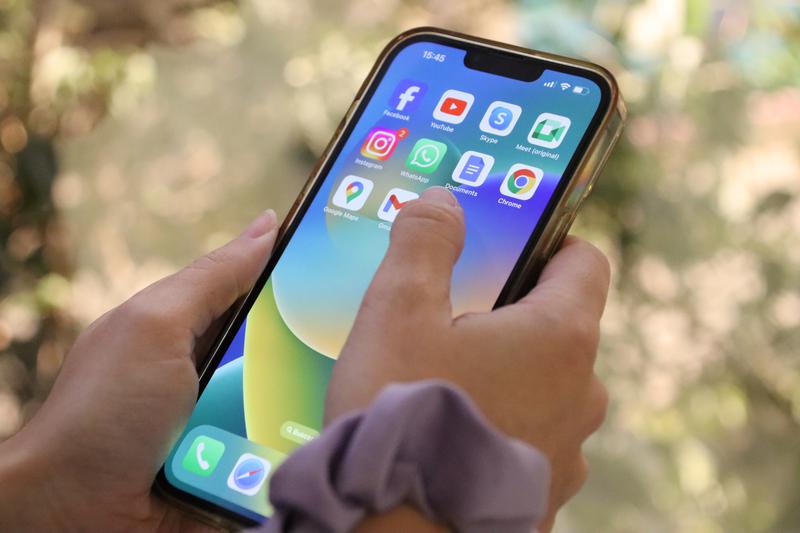What are the risks of early phone use and how do we get kids to switch off their screens?
Creating smartphone-free zones, promoting digital literacy, and embracing tech-free activities are key to success

With news of cyberbullying, pornography, addiction, increased behavioral and eating disorders, and suicides, parents around the world have become increasingly concerned about early cell phone use. They fear that early exposure, especially to social media, poses many risks to their children.
While there's no specific age for safe cell phone use, evidence suggests that the impact on teenagers depends on how and in what contexts they use them.
Social media in particular has been linked to poorer mental health and higher rates of depression, although it is only one of many contributing factors.
Experts point out that at this age, the brain is still immature and does not have the ability to self-regulate against the constant stimuli generated by social media.
An early use of phones has also been linked to increased exposure to pornography, with the average age of first exposure in Spain being between 9 and 11 years old. Early exposure, coupled with poor sexual education, risks normalizing violence against women and increases sexual disorders.
Although the Catalan government recently decided to ban phones in schools, prompted by a parents' movement, experts also say that what children do with their devices is much more important than the device itself.
Banning phones alone is unlikely to get to the root of the problem. The question remains: how do we limit screen time and effectively teach responsible device use?
Smartphone-free zones, digital literacy, and tech-free activities
José Ramón Ubieto, a clinical psychologist and author of ¿Adictos o Amantes? (Addicts or Lovers?), a book offering strategies for parents to foster healthy digital habits in their children, says that banning cell phones in schools is "a necessary element in a much broader plan."
He highlights three essential steps to reduce screen time, promote safe cell phone use, and prevent future mental health issues: establishing cell phone-free zones, promoting digital literacy, and engaging in technology-free activities.
"Classrooms and playgrounds in schools should be cell phone-free spaces. But at home, bedtime should also be a phone-free time. Children should not go to bed with their phones. Or use them during family meals. It has proven to be a key factor in their education and academic success," he says.
José emphasizes that digital literacy is essential to promoting responsible use of cell phones and social media. Parents need to teach their children how to use technology safely and to understand that ethical values extend to the virtual world.
"We must teach them how to protect their privacy, not to share their geolocation, not to post pictures indiscriminately, not to let anyone into their account. But also that ethical principles such as respect apply on the street, and apply online as well," he explains.
Leading by example is key if parents want their children to spend less time online. Engaging in technology-free activities promotes a healthy balance and shows that there is life beyond the screen.
"Presence and attention are fundamental because it gives them satisfaction and authenticity that the virtual world will never be able to provide. We need to show them that there is life beyond the screens, but show it to them with our presence," he says.
School project promotes safer cell phone use
Many initiatives in Catalonia are promoting digital literacy and educating children on mobile phone use. Vedruna school in Ripoll, located in the Catalan Pyrenees, has initiated a program to promote a "healthier and critical" approach to mobile phone use among 11- and 12-year-old students.
In collaboration with parents, the program educates young people on safer use of the devices and raises awareness of potential risks associated with mobile phones.
If successful, the project will expand to other age groups and schools, with the goal of establishing a 10-point protocol agreed upon by students and families to manage screen time and mitigate potential dangers.
"We encourage students to have access to this technology as long as it is used in a healthy and critical way. But to get to that point, we have to be able to work with them and address it in the classroom," says the project manager, Ariadna Delgado.
What are other EU countries doing?
Several European countries have introduced restrictions on the use of mobile phones in schools. France, for example, implemented a ban in primary and secondary schools in 2018, citing improved classroom environments and reduced bullying incidents.
While countries like the Netherlands and Italy have bans similar to France's, other countries like Germany, Belgium, or Portugal give schools autonomy to decide whether to allow mobile phone use.
Major global organizations also seem divided on the issue. While a 2023 report by UNESCO recommends banning cell phone use in classrooms due to its distracting nature, a report by the OECD does not advocate for a ban. Instead, it suggests that moderate use of cell phones and similar devices can improve student learning.
To learn more about the risks of early phone use, the parent initiative that led to a cell phone ban in Catalan schools, and an expert's take on the issue, listen to the latest episode of our podcast Filling the Sink.